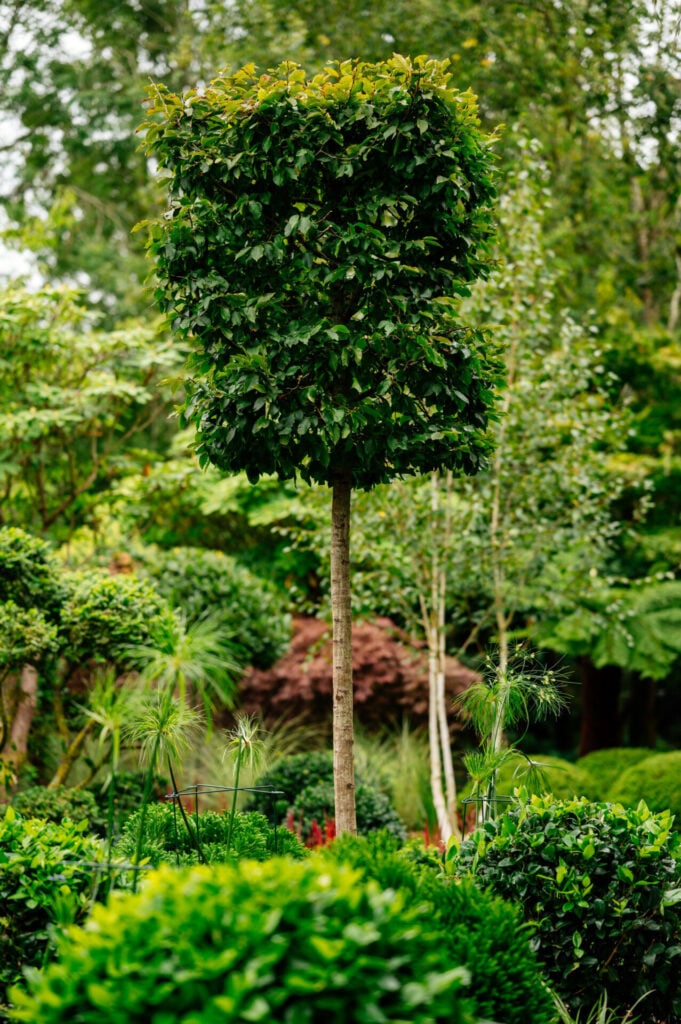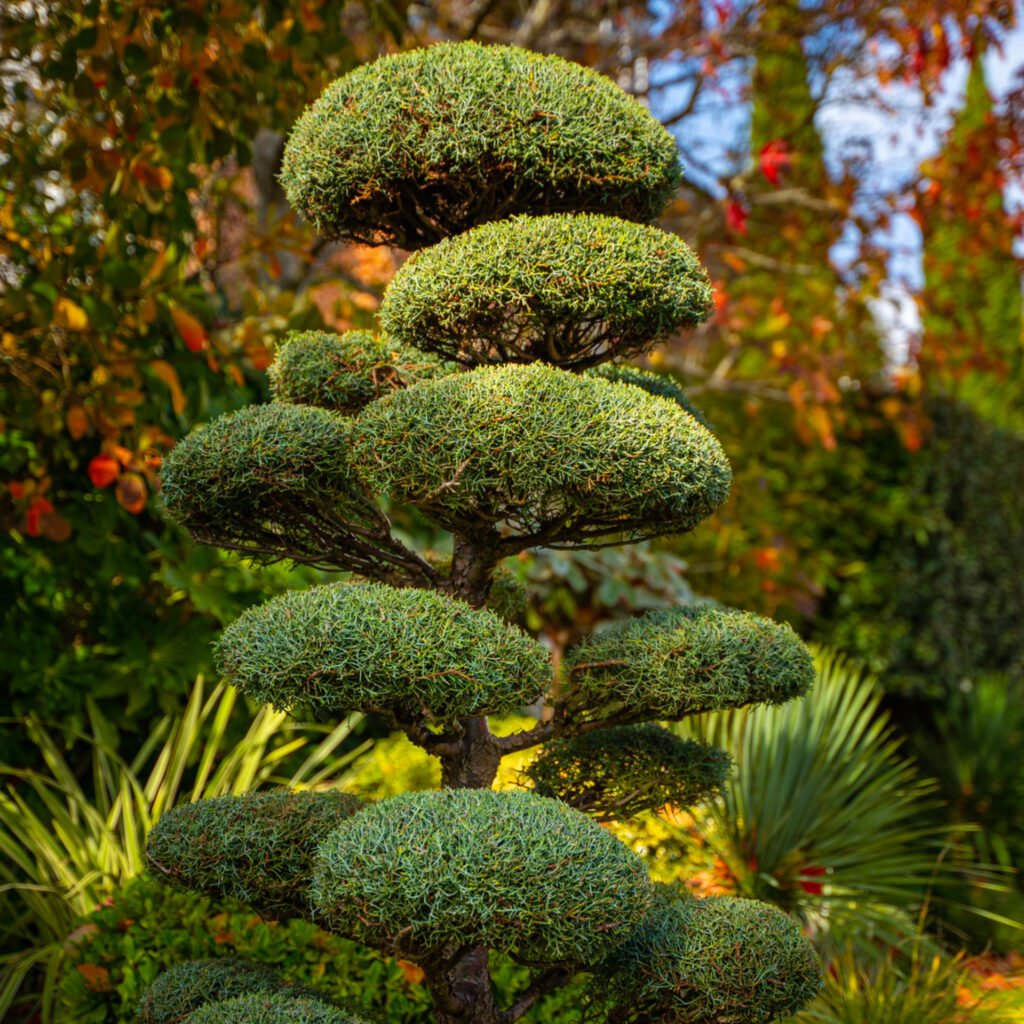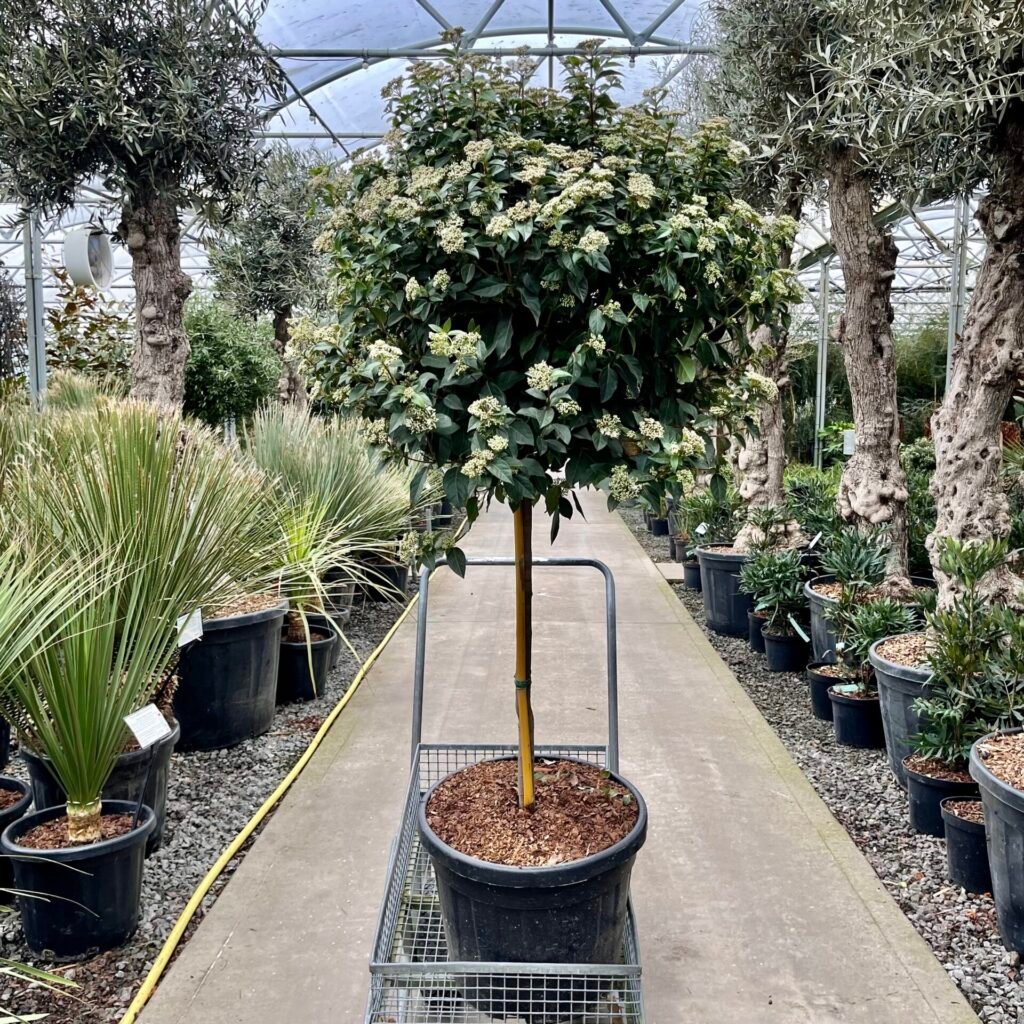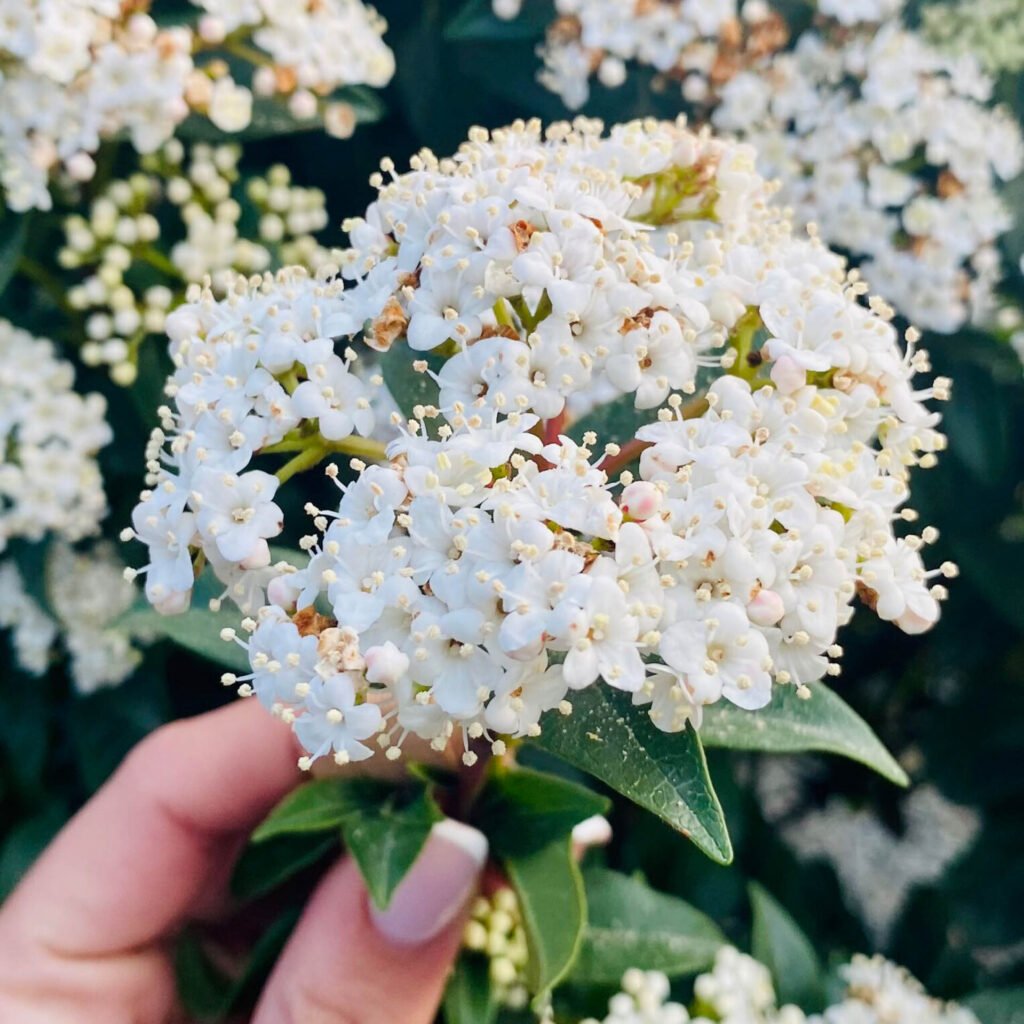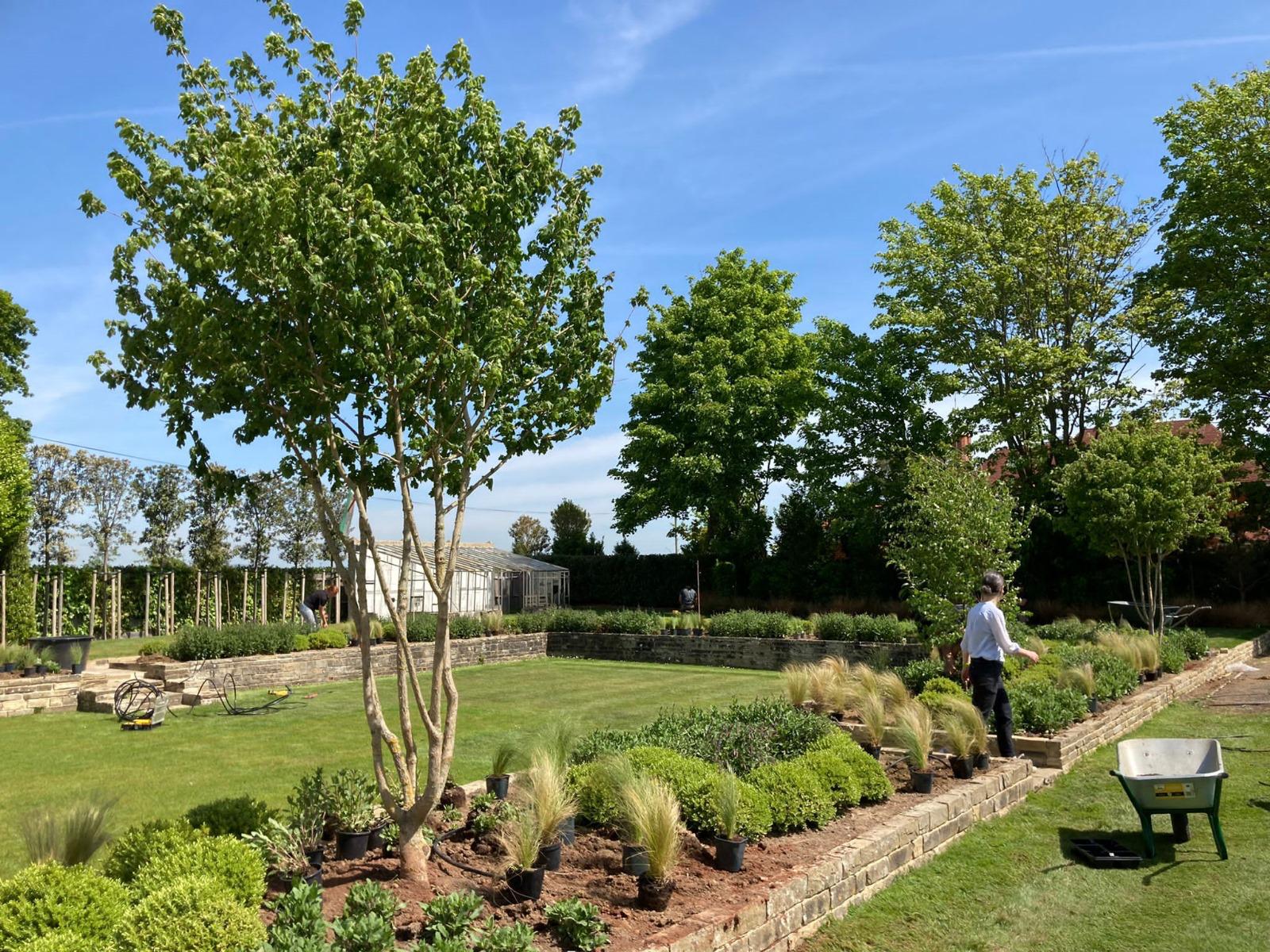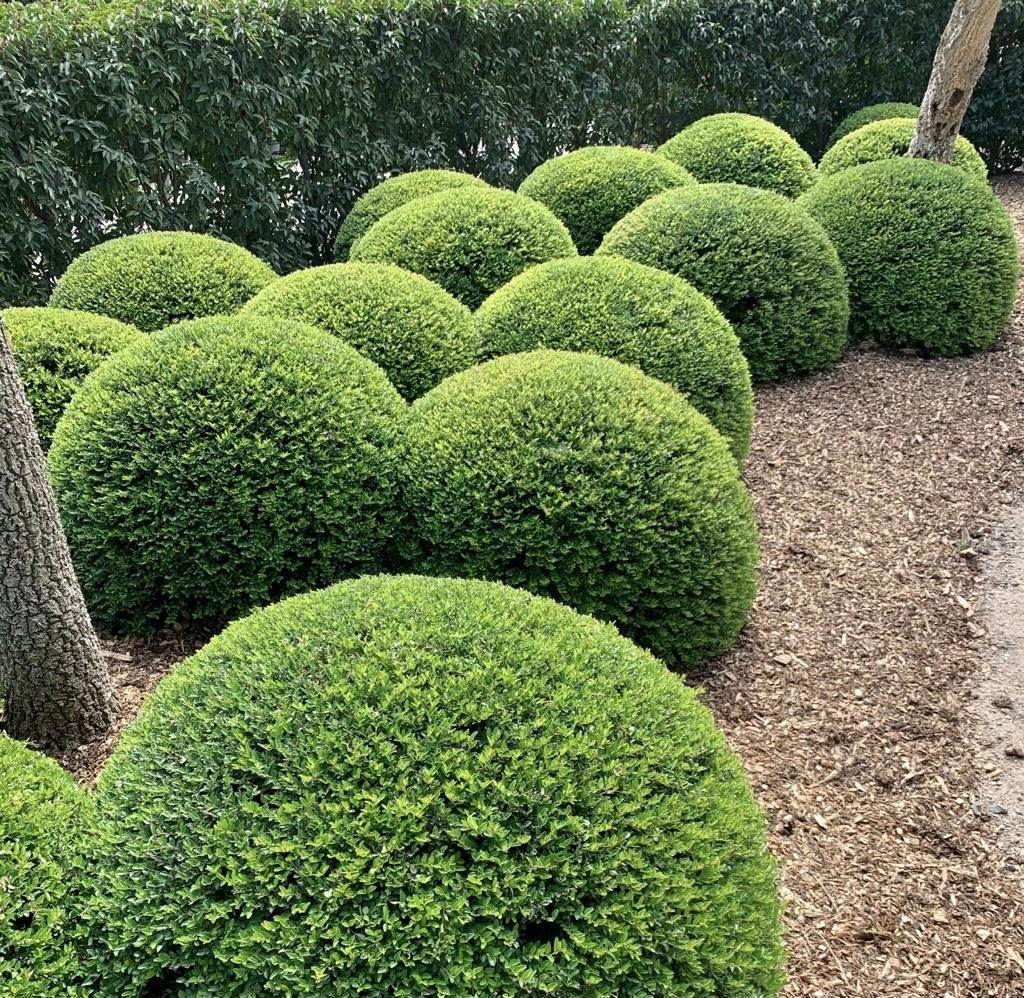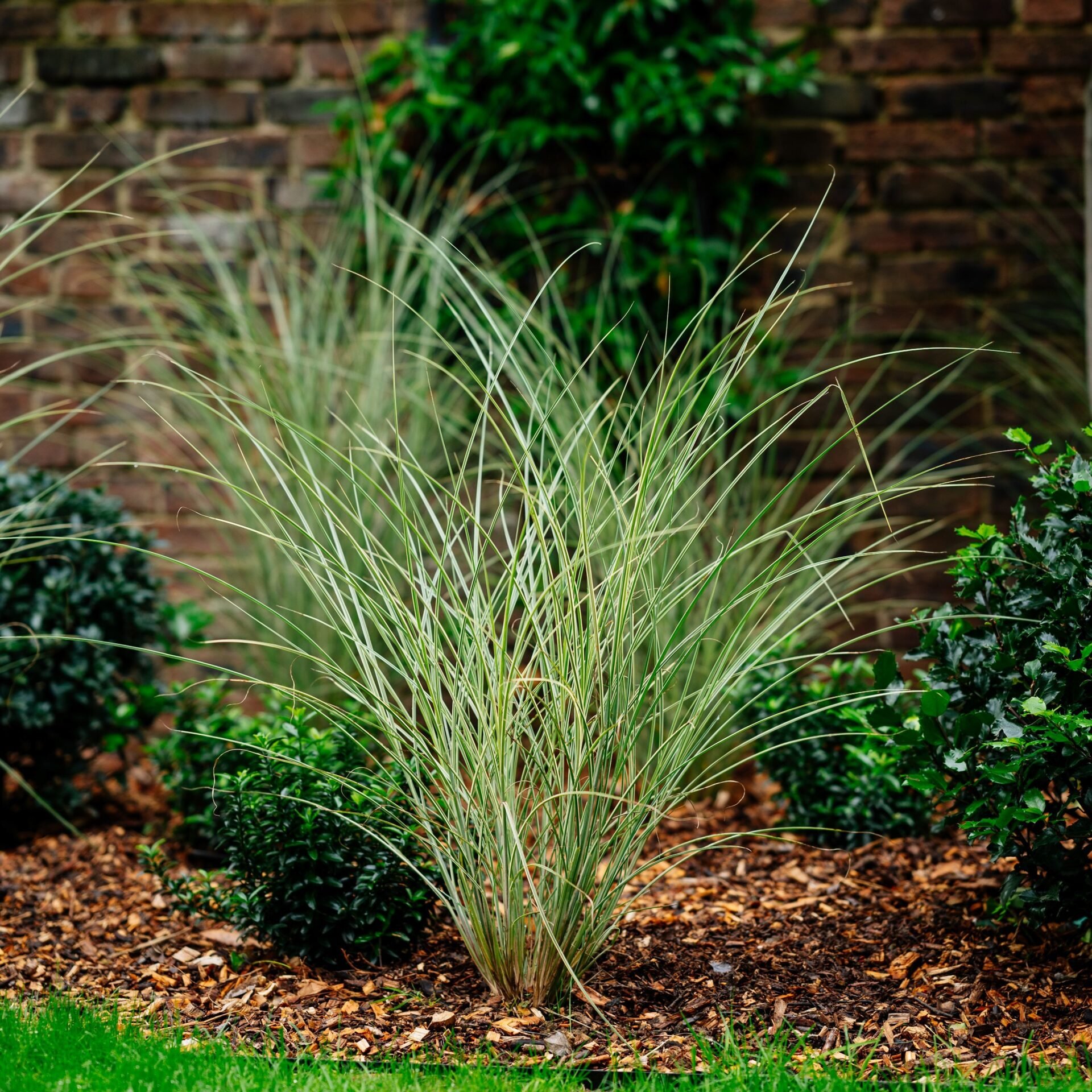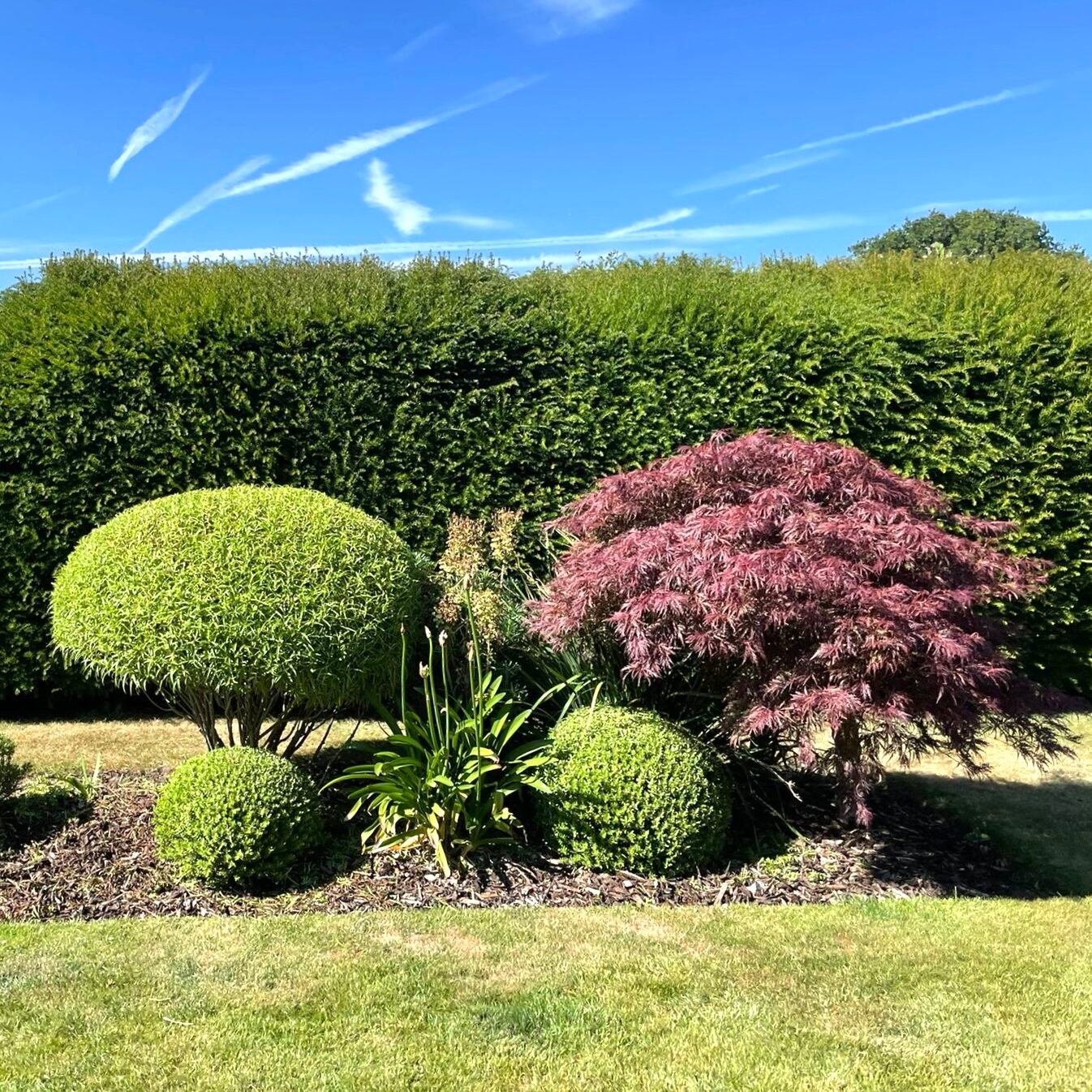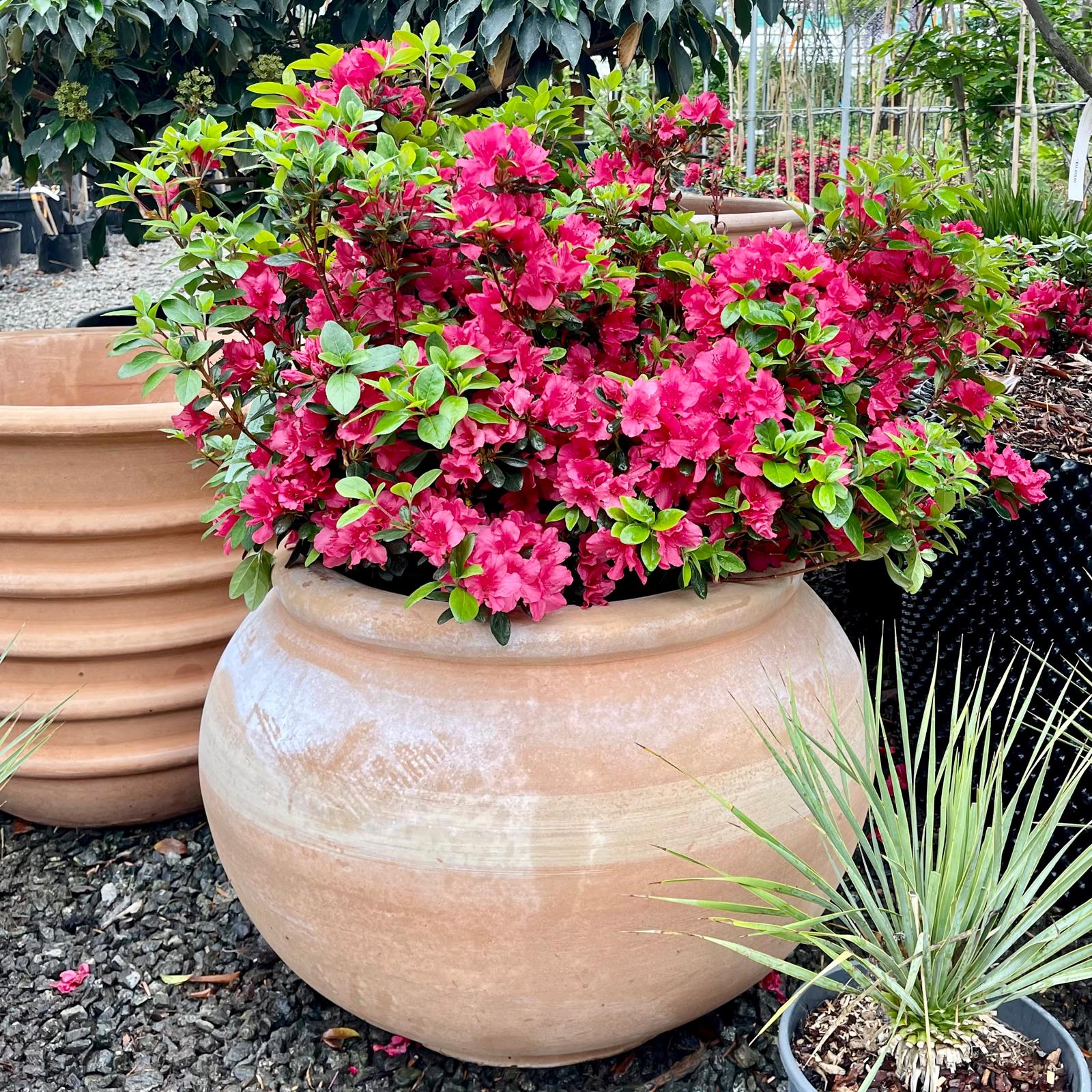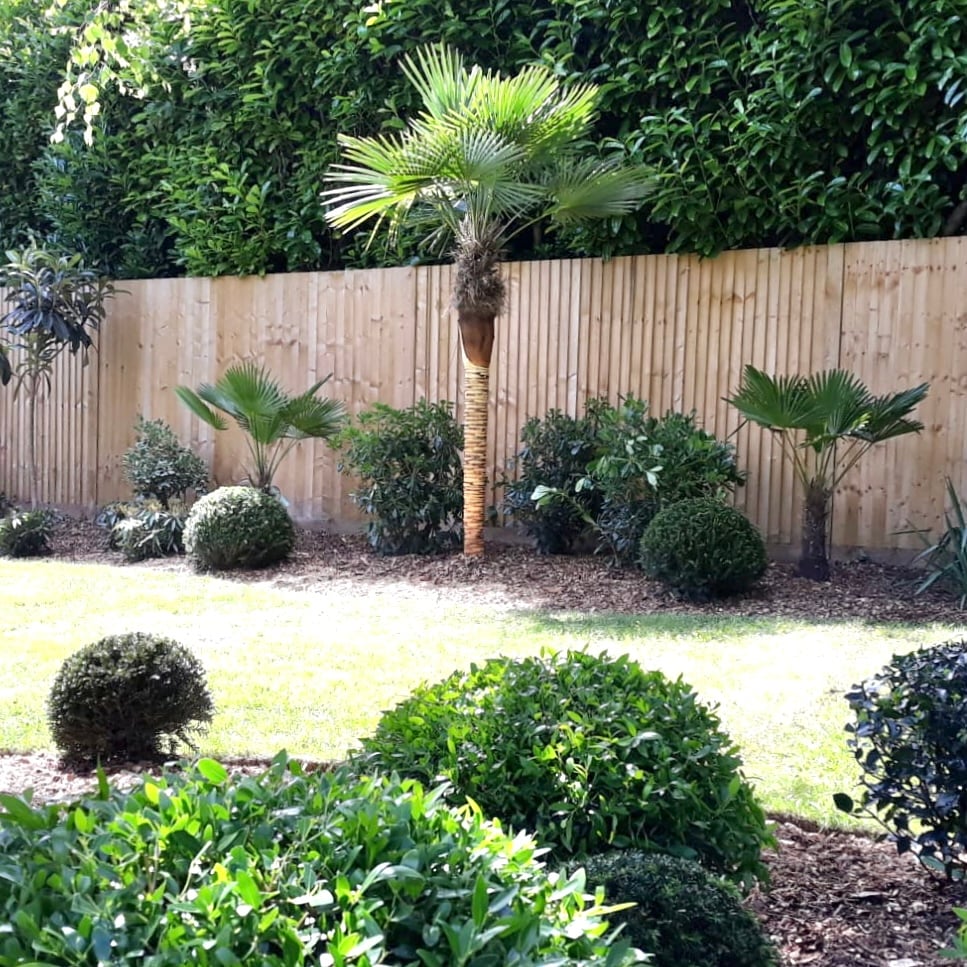Plants For New Homes: Part 2
Forward Thinking With Forms: Topiary Trees
Here in Part 2, we’ll talk about 5 of the must-have topiary trees which are perfect for new gardens. In Part 1 of our ‘Plants For New Homes’ guide we looked at a number of starter plants that could handle most of the usual challenges that a new garden plot may present. These new-plot niggles may be environmental, with tricky soils or awkward aspects to consider. Sometimes it’s a stylistic challenge with gaps to fill or a lack of ‘foundation’ to an inherited planting scheme. Perhaps you’re new to clay or at a loss for what to plonk against a shady, windy wall. This guide is here to help.
There’s a temptation to equate tough and tolerant with boring and ubiquitous and you mustn’t: we’re here to state unequivocally that this is not the case. A Viburnum for example, may not be an unfamiliar sight but creatively trained and maintained, it can be elevated to a vibrant and shapely sculpture. Understanding that you can exercise you own ‘will’, get hands on and transform plants is one of the best motivators in forging ahead, celebrating your success and then really starting to get your fingers green as your new garden design takes shape. So let’s talk about trees.
Trees are essential in any garden, and you’ll need them for all manner of reasons. They will add height and maturity to your developing design. These hard-working evergreens will give you winter interest and consistency of shape and form throughout the year. Topiary shapes connect us with a rich (and often rather grand) tradition of exercising playful control over nature, but you needn’t go wild with the shears and it doesn’t have to mean peacocks or skew-whiff squirrels. Shudder.
Instead, think classic and classy lollipops and soft niwaki cloud shapes: elevated in the form of standards and half-standards. Or think undulating and fanciful in the form of mushroom shapes and pillowy blobs. All simple, all elegant, but all impactful and with just the right amount of whimsy after some creative maintenance.
So, here are five suggestions to get you thinking – choices that will give you instant maturity, characterful forms and sculpture.
1. VIBURNUM TINUS, Half Standard lollipop
The ‘informal-formal’ one that’s great for year round interest, structure and flowers. Viburnum tinus is a wonderful evergreen half-standard tree which has a well-earned reputation for adaptability. And it is really easy to grow so it’s perfect for your new garden. What’s particularly nice about this one is the relative rarity in seeing it given the topiary treatment. Being pretty tough it’s often planted as a handsome space-filler shrub (a worthy role in and of itself) but this winter-flowering evergreen really suits a tidying trim and looks tremendous when lollipopped, as shown here.
Form without too much formality.
Plant one as a single sentry, all stately and shapely in the middle of a bed. Even better, a pair to flank a doorway would be quite grand, don’t you think? As a bonus, when most other things are slumbering, pretty flowers will appear all over it just when you really need them. They have dark and glossy foliage, with each leaf being quite large giving this tree a slightly shaggy outline. This soft silhouette is perfect for a dollop of symmetry in your new garden without making it look too slicked-back.
2. PHOTINIA X FRASERI ‘MAGICAL VOLCANO’, Half Standard lollipop
The showoff. Brilliant colour, hardiness and vigour. Photinia X Fraseri ‘Magical Volcano’ is another half-standard tree with a tough constitution and grow-anywhere attitude. Photinias in general are superb for beginner gardeners as they’re not fussy or hard to grow: good news for your new garden. Photinia x Fraseri is an evergreen so it’s and essential if you want year-round structure and interest. ‘Volcano’ is an apt description for a tree with such fiery red foliage in early spring. Like the Viburnum they have all the qualities of a hardy tree while also looking terrific as living sculptures. Add a row of these to flank a path in your new garden, or have them hover at the corners of a geometric layout perhaps. A stately specimen hovering above some tightly-clipped balls looks smashing as well.
Astonishingly easy to grow (did we mention that: it’s worth repeating) they are happy in sun or shade and on most soils. These rounded forms need only a gentle trim to keep their softly-rounded shape, so their maintenance won’t be onerous.
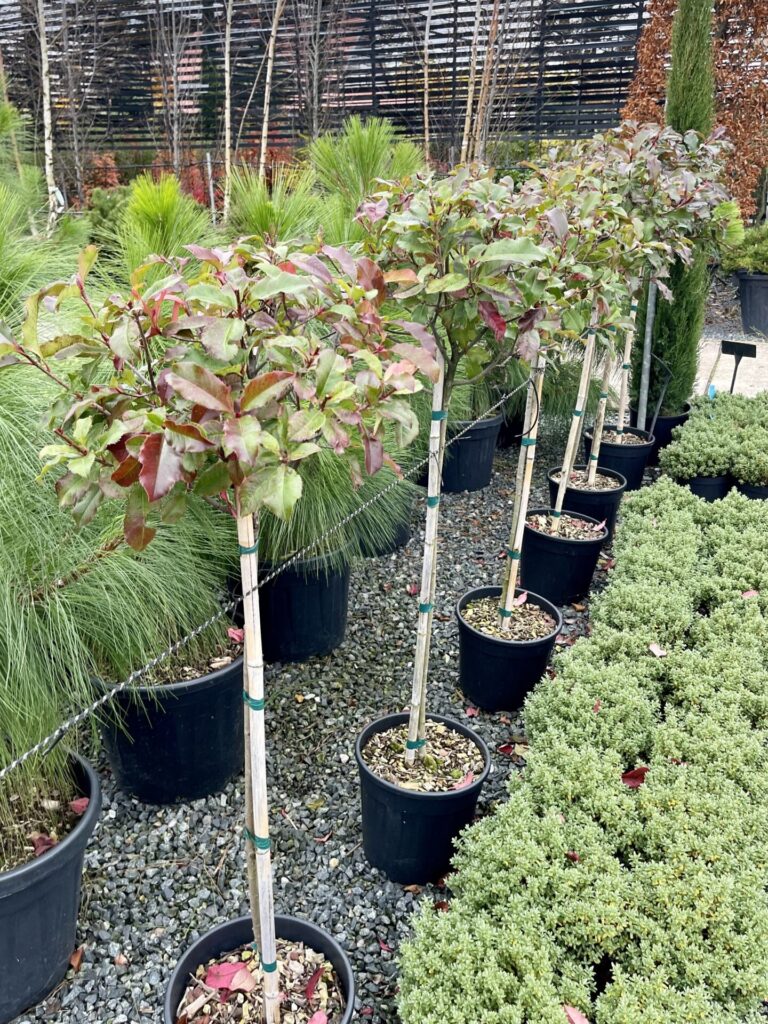
Starter standards: Photinia X Fraseri ‘Magical Volcano’ Astonishingly easy to grow and dead simple to shape and maintain
3. PINUS STROBUS ‘KRUEGER’S LILLIPUT’, Mini Standard
“Proper plants in proper places make the true definition of style” Apologies to Jonathon Swift fans, but we enhanced that famous line just a little. Pinus Strobus ‘Krueger’s Lilliput’ may indeed be teensy but we must include a conifer and this one is a marvel in miniature. It is a tough and resilient tree, adapted to hard conditions and some intense extremes of climate. These robust qualities already mark ‘Krueger’s Lilliput’ as the ideal tiny tree for a beginner, and if you want a good housewarming gift for someone with a new garden to tackle then this is the one. Being rather slow to grow, it’s maybe one to add early to a new garden layout. Their low-level cloud shapes look lovely skimming across a rocky alpine design, or right at the front of a border where it can be admired up close. Extremely pretty trees, they have little needles which are prickly but very tactile, with a silvery underside to them that contrasts smartly with dense tawny stems.
Being dinky they are an ideal mini standard tree for smaller spaces like a courtyard or patio, where it will be perfectly content in a handsome pot. Just like here. It will happily do its thing with very little intervention and establish itself into an extraordinarily long-lived tree. Just not a big one.
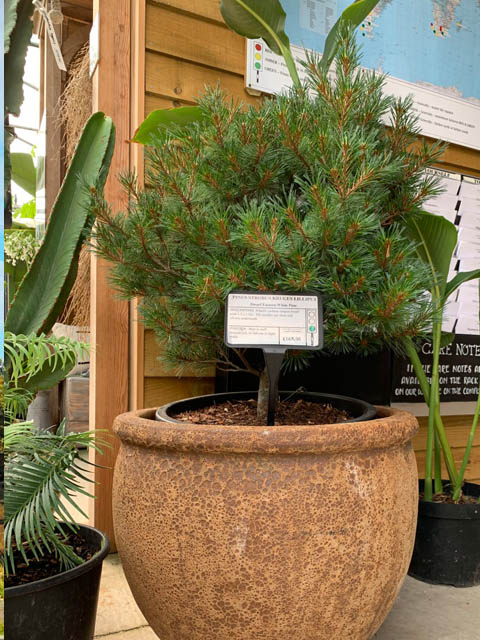
Pinus Strobus ‘Krueger’s Lilliput’ Striking in pots, and great for courtyards, patios or balconies
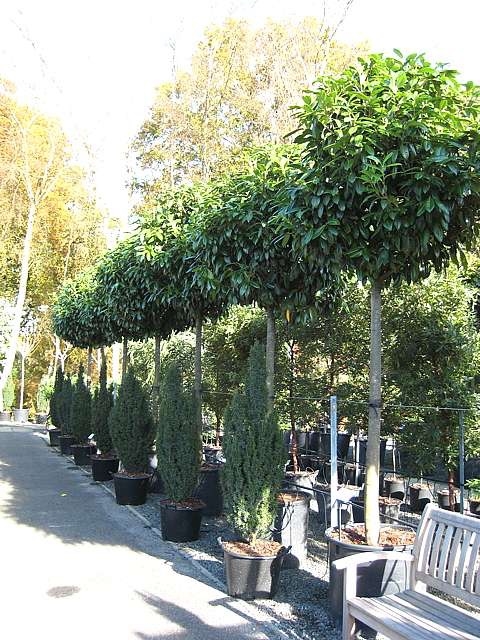
Prunus laurocerasus lollipops create vertical drama and smart definition
4. PRUNUS LAUROCERASUS, Full Standard lollipop
The heavyweight champion that’s essential for grandeur, hardiness and versatility of form. From the petite to the hefty: Prunus laurocerasus in a full standard form is a chunky and impactful tree with proper presence and visual clout. More usually seen in gardens as dense hedging or sprawly and messy shrubs, this species is another great choice for new gardens. We love them when clipped and trained into these full standard forms, enhancing a nice tree into a really lovely one. The lovely bobble of an expertly-trained laurocerasus atop a stout trunk is a delight, and definitely our favourite way of growing this hardy tree. Plant them for immediate impact in a new garden: they’re a fine choice for a fresh new plot which is likely looking a bit bare and lacking in structure. If you’re feeling formal, then a quadruplet could corner a neat straight-edged lawn, perhaps. They also look splendid lining a driveway or flanking a wide path, and if their underplanting is yet to develop and bed-in (new gardens do take time) then their tall forms and bold silhouettes will immediately inject a sense of established maturity while the rest catches up. These trees will thrive almost anywhere, from windy coastal locations to city courtyards, and manage just fine on any old soil you care to plop them in. Winner.
5. FAGUS SYLVATICA
This is a beautiful tree which can be left to its own devices, or it can be clipped into large topiary shapes. It’s one of those useful broad-leafed trees that are adaptable and suits many forms. It manages, effortlessly, to be very hardy, too. Very appropriate for a new garden. Trained into cones, a pair of Fagus sylvatica planted to flank a gateway or to send you off down a path will give you instant architecture, and they generate a feeling of maturity from the get-go. Their bright green leaves have a soft and ruffled texture and when clipped they are very dense. It’s for this quality that they are also valuable as hedging trees, creating windbreaks and areas of peace and seclusion inside a big garden. Or indeed a smaller one. They grow quickly and establish fast, too, so another reason to plant them in a new garden. They are deciduous but their autumn leaves clasp the branches for a long time into winter: they will be a gorgeous gingerbread orange and even after they drop the naked structure of a well-formed Fagus remains a lovely, densely woven filigree of branches. They will grow in full sun to semi shade and on any soil that is reasonably well-drained. Be creative: clip them into huge cubes or tight-sided obelisks, or try a dome shape with a comically precise flat underside. Or don’t: let them grow their own way and you’ll have a loosely pyramidal tree that is just lovely, just the way it is.
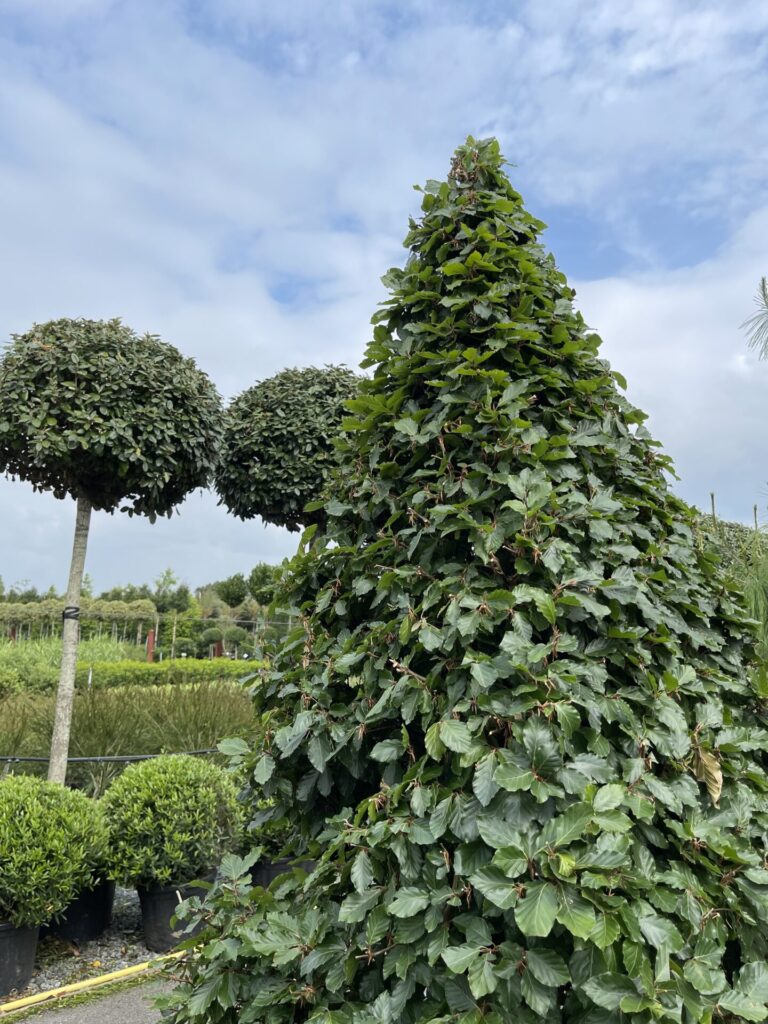
A substantial Fagus sylvatica clipped into a formal cone looks instantly mature and established
Next time…we’ve added some height and sculpture to anchor your developing design. You’ll need a supporting ensemble of mid-level and lower-down space fillers next. Join us over in Part 3 and we’ll look at some playful blobs, pillows and doughnuts.

